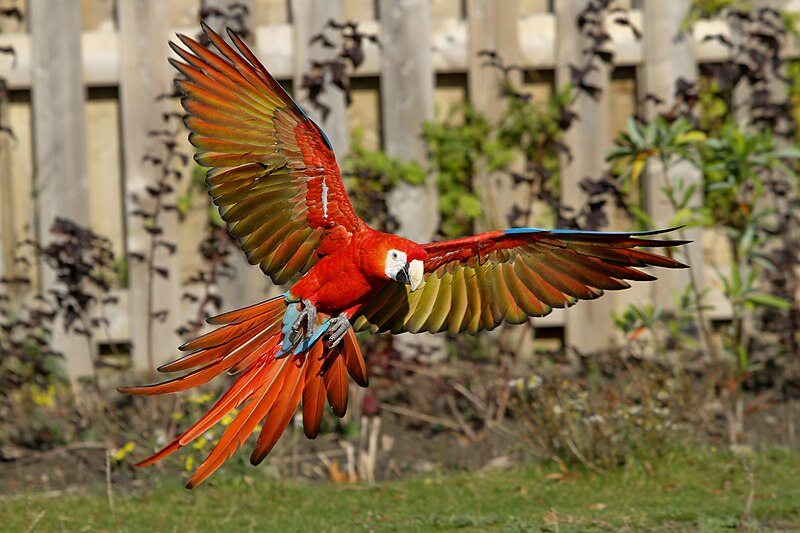In the mid to late 1990’s, I had the great fortune of being able to participate in field studies of the green anaconda in Venezuela. Working in the country’s central llanos (seasonally flooded grasslands) region, I was awestruck by the variety and abundance of bird life.

In my mind, many sightings vie for the title of “most spectacular” – scores of hoatzins clambering about in riverside tree tops, flocks of giant jabiru storks, hundreds of scarlet ibis and roseate spoonbills flying to roost, foraging buff-napped ibis, various hawks so bold that they dived at cast fishing lures. Undoubtedly, a chief contender among these was a small flock of scarlet macaws that frequented the area.
Memories of these brilliant birds flashing across the llanos’ strikingly blue sky remain as vivid today as when I saw them. I was a bit surprised to encounter these huge parrots in such open country, but have since learned that they quite readily switch habitats to those where they can live unmolested by people. The enlightened owners of most of the llanos’ extensive cattle ranches jealously guard resident wildlife, resulting in a simply overwhelming array of animals of all kinds (I was also shocked to encounter anacondas, a snake more often associated with forested rivers, but in 5 years we captured and tagged over 500 of the huge serpents).
In accordance with the reports of others, I found that scarlet macaw pairs were very evident within the flock itself. Indeed, paired bird s flew so that their wings were almost in contact, and foraged next to each other most of the time. I agree most strongly with those who have compared scarlet macaws feeding in trees to “giant, gaudy flowers”! One observes wild macaws only briefly before their sociability and need for contact becomes clear – it surely was a “take home” message for this aviculturist.
s flew so that their wings were almost in contact, and foraged next to each other most of the time. I agree most strongly with those who have compared scarlet macaws feeding in trees to “giant, gaudy flowers”! One observes wild macaws only briefly before their sociability and need for contact becomes clear – it surely was a “take home” message for this aviculturist.
The scarlet macaw’s ability to adjust to varying habitats – open and fairly thick forest, scrubland, llanos, ranches and farms – along with its intelligence, are keys to its continued survival in the wild. Still, as far back as 1932, it was found to be rare in settled areas of Guatemala and elsewhere, and by the 1960’s had retreated to small, isolated habitat patches in Costa Rica, Panama, el Salvador, Honduras, Guyana and much of the rest of its range.
A friend involved in field research in Guyana reports seeing mixed flocks of scarlet and blue and gold macaws (Ara ararauna) – one reason I’m planning a visit soon!
Venezuela’s llanos region, especially during the dry season, is a “must see” for serious birders – please write in if you would like further information. Thanks, until next time, Frank.
The ranch on which I worked is named Hato el Cedral. You can view a list of the 335 bird species recorded here, as well as other information, at:
http://www.xeno-canto.org/specieslistsGPS.php?x=-69&y=7&view=1
 The Scarlet Macaw (Ara macao) is surely one of the most recognizable birds on the planet. Images of this spectacular parrot adorn the brochures and T-shirts of travel agencies, zoos and aviaries worldwide. Less well-known, however, is its natural habits and precarious existence in the wild.
The Scarlet Macaw (Ara macao) is surely one of the most recognizable birds on the planet. Images of this spectacular parrot adorn the brochures and T-shirts of travel agencies, zoos and aviaries worldwide. Less well-known, however, is its natural habits and precarious existence in the wild. That Bird Blog – Bird Care and History for Pet Birds
That Bird Blog – Bird Care and History for Pet Birds


 s flew so that their wings were almost in contact, and foraged next to each other most of the time.
s flew so that their wings were almost in contact, and foraged next to each other most of the time.